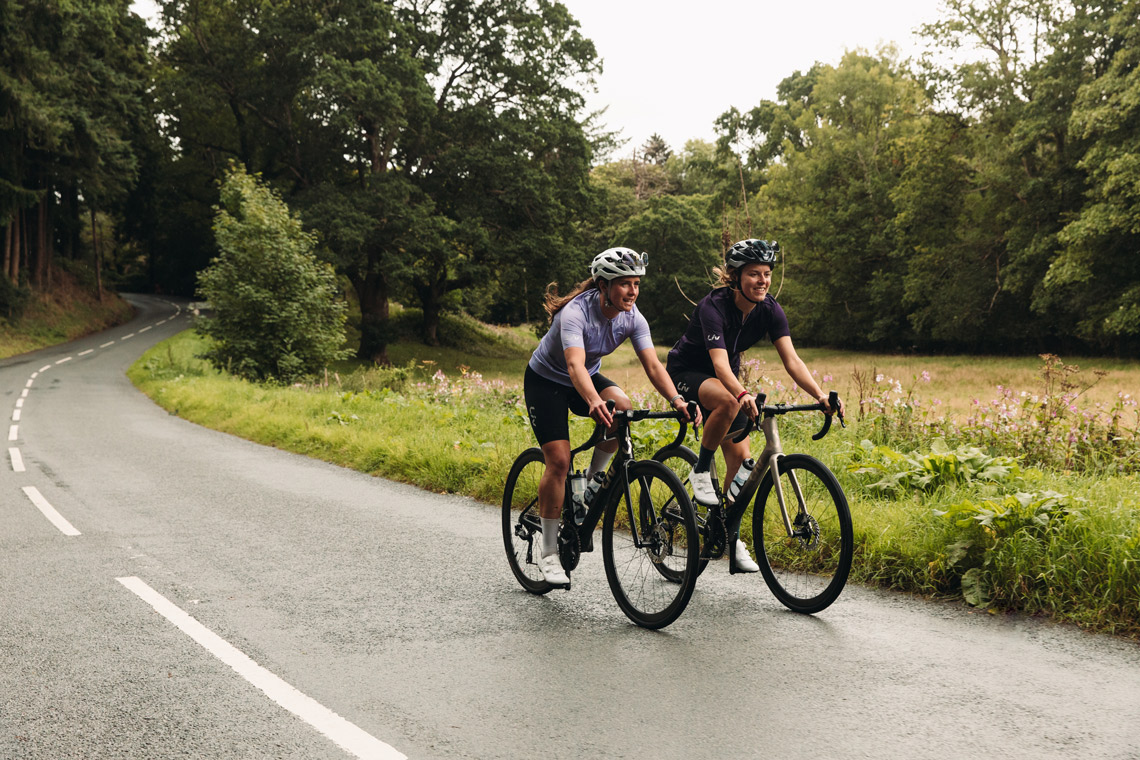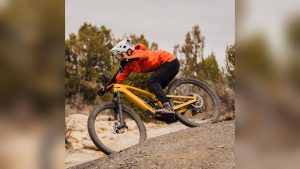Riding a bicycle in traffic can feel overwhelming and even scary. But it doesn’t have to be that way.
With the right tips, you can stay safe and confident every time you hit the road. Imagine gliding through busy streets with ease, knowing exactly what to do to protect yourself. You’ll discover simple, practical steps that will make your rides safer and more enjoyable.
Keep reading to learn how to take control of your bike and traffic—so you can ride smart, stay safe, and feel great doing it.

Credit: www.liv-cycling.com
Choosing The Right Bike
Choosing the right bike is the first step to safe riding in traffic. A good bike fits your needs and the city roads. Comfort and control help you stay alert. A well-chosen bike makes riding easier and safer.
Types Of Bikes For City Riding
City bikes come in many styles. Hybrid bikes mix road and mountain bike features. They offer comfort and speed for city streets. Commuter bikes focus on practicality. They often have racks and lights for daily use. Folding bikes save space and are easy to carry. Choose a bike that matches your route and storage needs.
Essential Bike Features For Safety
Safety features protect you in traffic. Bright front and rear lights increase visibility. Reflectors on wheels and pedals help others see you. A bell or horn alerts pedestrians and drivers. Good brakes are crucial for quick stops. Tires with good grip prevent slipping on wet roads. A comfortable saddle and handlebars improve control and reduce fatigue.
Preparing Your Bike
Preparing your bike for riding in traffic is essential for safety. A well-prepared bike helps you avoid accidents and ride smoothly. Before every ride, spend a few minutes checking your bike. This small effort keeps you safe and confident on the road.
Checking Brakes And Tires
Brakes must work perfectly. Test them by squeezing the brake levers. The bike should stop quickly and smoothly. Check the brake pads for wear. Replace them if they are thin or cracked.
Tires need enough air. Low pressure makes riding hard and unsafe. Press the tires with your fingers. They should feel firm, not soft. Look for cuts or worn tread on tires. Replace damaged tires before riding.
Using Lights And Reflectors
Lights and reflectors make you visible to drivers. Always use a white front light and a red rear light. Turn them on, even during the day.
Reflectors on pedals, wheels, and the bike frame increase visibility. Clean them regularly to keep them bright. Good lighting and reflectors help others see you clearly.
Wearing Safety Gear
Wearing safety gear is a must for riding a bicycle in traffic. It protects your body from injuries in case of accidents. Safety gear also helps other road users see you clearly. Proper gear boosts your confidence and lets you focus on the road.
Helmet Selection And Fit
Choose a helmet that meets safety standards. Look for a hard outer shell and soft inner foam. The helmet should cover your forehead without blocking your view. Adjust the straps to fit snugly under your chin. The helmet must not move when you shake your head. Replace helmets after any crash or every few years.
Visibility Clothing And Accessories
Wear bright or fluorescent colors during the day. At night, use reflective vests or bands. Attach reflectors to your bike and pedals. Lights on the front and back increase visibility in low light. Clear visibility helps drivers notice you sooner. This reduces the risk of accidents greatly.
Mastering Traffic Rules
Riding a bicycle safely in traffic depends heavily on understanding and following traffic rules. Knowing these rules keeps you visible and predictable to drivers. It also helps avoid accidents and fines. This section covers essential traffic rules every cyclist must know.
Key Road Signs For Cyclists
Cyclists must recognize important road signs. Stop signs mean come to a full stop. Yield signs require slowing down and giving way to others. Bike lane signs show where you should ride. No entry signs tell you where you cannot go. Obeying these signs protects you and others on the road.
Lane Positioning And Signals
Stay in the correct lane to ride safely. Use bike lanes when available. If no bike lane exists, ride near the right side but not too close to the curb. Always signal before turning or changing lanes. Use hand signals: left arm straight for left turn, right arm straight for right turn, and left arm bent down for stop. Signaling helps drivers know your next move.
Riding Techniques For Safety
Riding a bicycle in traffic requires smart techniques for safety. Knowing how to keep control and move confidently helps prevent accidents. These skills make riding smoother and safer on busy roads.
Maintaining Balance And Control
Keep your body relaxed but firm on the bike. Hold the handlebars lightly to steer easily. Look ahead, not down, to stay steady. Pedal at a steady pace to avoid wobbling. Use brakes gently to stop smoothly. Practice riding in calm areas to build confidence.
Navigating Intersections And Turns
Slow down before reaching intersections. Check all directions for cars and pedestrians. Signal your turns clearly with hand signals. Stay in the bike lane or near the curb. Make wide turns to avoid sharp angles. Watch for vehicles turning suddenly. Stay alert and ready to stop if needed.
Dealing With Traffic Situations
Dealing with traffic situations on a bicycle requires focus and clear thinking. Roads can be busy and unpredictable. Staying calm helps you make smart decisions quickly. Understanding how to handle different traffic scenarios keeps you safe and confident.
Handling Busy Roads
Busy roads have many vehicles and fast movement. Always stay visible by wearing bright clothes and using lights. Keep to the right side of the lane unless you are passing. Watch for cars turning or changing lanes near you. Use hand signals to show your next move early. Avoid sudden stops or turns that may surprise drivers. Look ahead and plan your path carefully.
Sharing The Road With Vehicles
Cars and bikes share the same space. Respect the space each one needs to move safely. Do not ride too close to parked cars to avoid opening doors. Maintain a steady speed to help drivers predict your actions. Yield to larger vehicles that may have limited visibility. Always check behind before changing lanes or turning. Make eye contact with drivers at intersections when possible.
Avoiding Common Hazards
Riding a bicycle in traffic needs care and focus. Avoiding common hazards helps keep you safe. Knowing how to spot dangers early gives you time to react. Stay alert and watch the road closely.
Spotting Road Obstacles
Look out for potholes, cracks, and debris on the road. These can cause accidents or damage your bike. Scan ahead often to see obstacles early. Slow down to pass safely around them. Watch for wet leaves or oil spots that make the road slippery.
Preventing Doorings And Blind Spot Accidents
Keep a safe distance from parked cars to avoid sudden door openings. Watch for drivers and passengers who might open doors without checking. Stay visible by wearing bright clothes and using lights. Avoid riding in vehicle blind spots. Position yourself where drivers can see you clearly.

Credit: www.mcfarlandclinic.com
Emergency Preparedness
Riding a bicycle in traffic can be unpredictable. Being ready for emergencies helps keep you safe. Knowing what to do in small repairs or accidents saves time and stress. Preparation boosts your confidence on the road.
Basic Bike Repairs On The Go
Carry a small repair kit. Include a tire lever, patch kit, mini pump, and multi-tool. Fixing a flat tire is common. Use tire levers to remove the tire. Patch the hole or replace the tube. Inflate the tire with a mini pump. Tighten loose bolts with a multi-tool. Regular checks prevent many problems on the road.
What To Do After An Accident
Stay calm and check for injuries. Move to a safe spot if possible. Call emergency services for help. Exchange contact details with others involved. Take photos of the accident scene and damages. Report the accident to the police if required. Seek medical help even for minor injuries. Keep a record of all details for insurance claims.

Credit: www.liv-cycling.com
Frequently Asked Questions
How Can I Stay Visible While Riding In Traffic?
Wear bright clothing and use front and rear bike lights. Reflectors on your bike and helmet increase visibility. Avoid riding in drivers’ blind spots for safety.
What Are The Essential Safety Gear Items For Cyclists?
Always wear a properly fitted helmet. Use gloves and padded shorts for comfort. Equip your bike with lights, reflectors, and a bell to alert others.
How Should I Signal Turns And Stops Effectively?
Use clear hand signals: left arm straight for left turn, right arm for right turn. Point down or raise arm for stopping. Signal early to inform drivers.
What Are The Best Road Positioning Tips For Cyclists?
Ride in the right lane position, avoiding gutters and parked cars. Take the lane when necessary for safety. Always stay predictable to drivers and pedestrians.
Conclusion
Riding a bicycle safely in traffic takes focus and care. Always wear a helmet and bright clothes. Watch for cars and use hand signals clearly. Stay on bike lanes when possible. Obey traffic rules and stay alert. Avoid distractions like phones or headphones.
Practice these tips every time you ride. Safety keeps you and others protected. Enjoy your ride with confidence and caution. Safe cycling helps everyone on the road stay secure.



